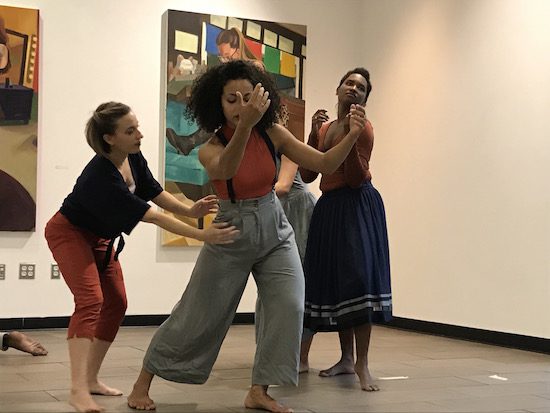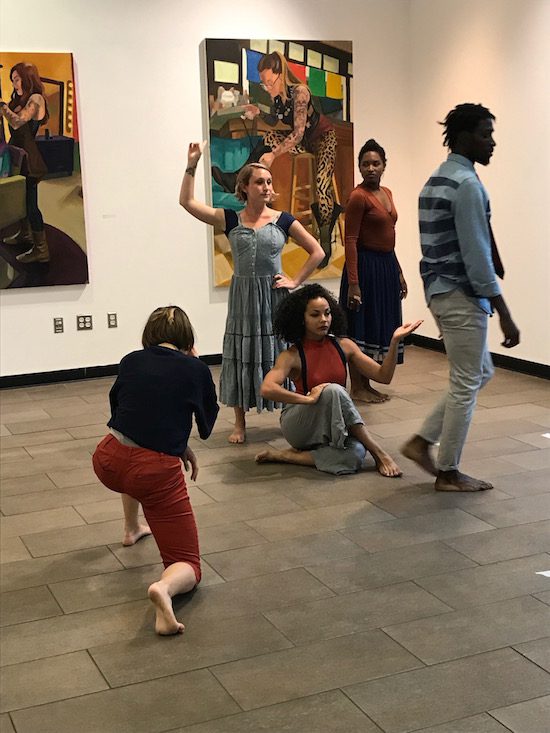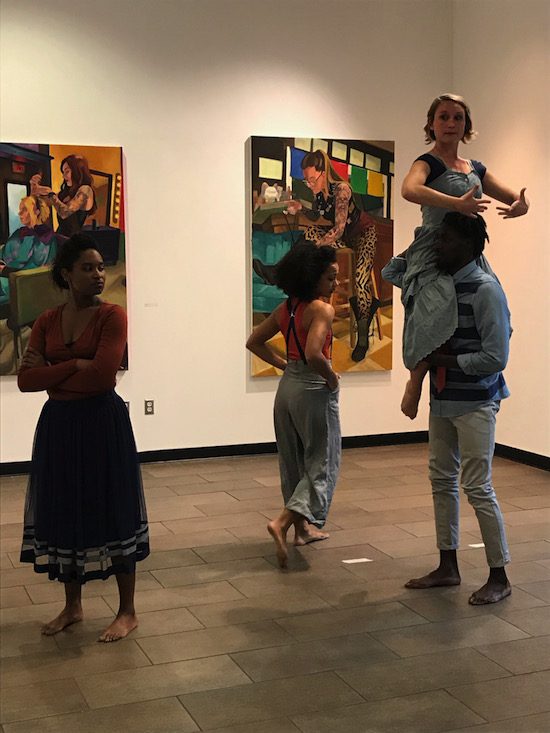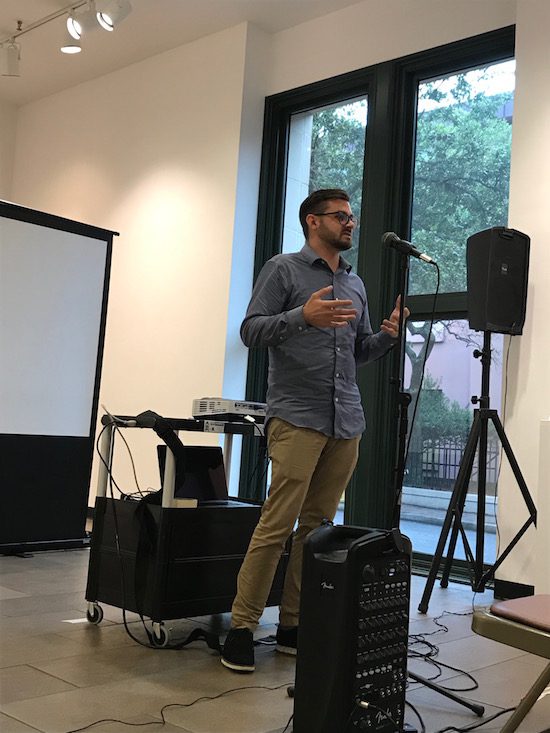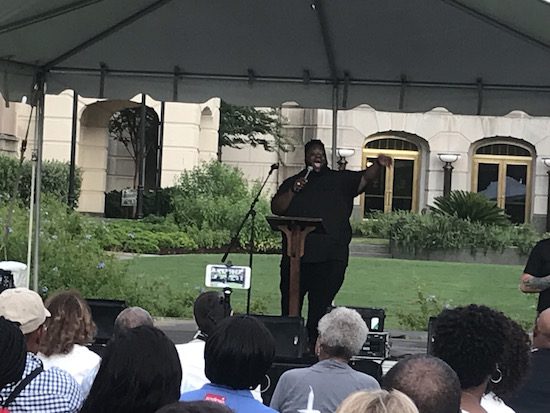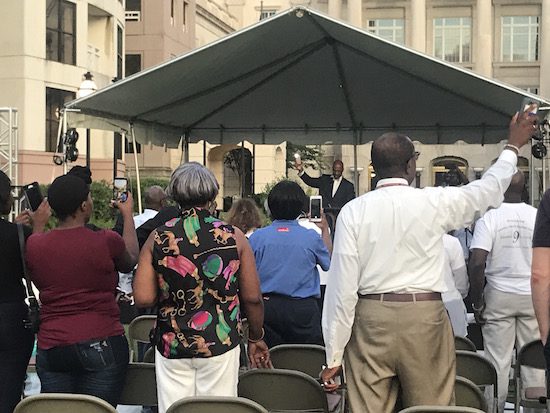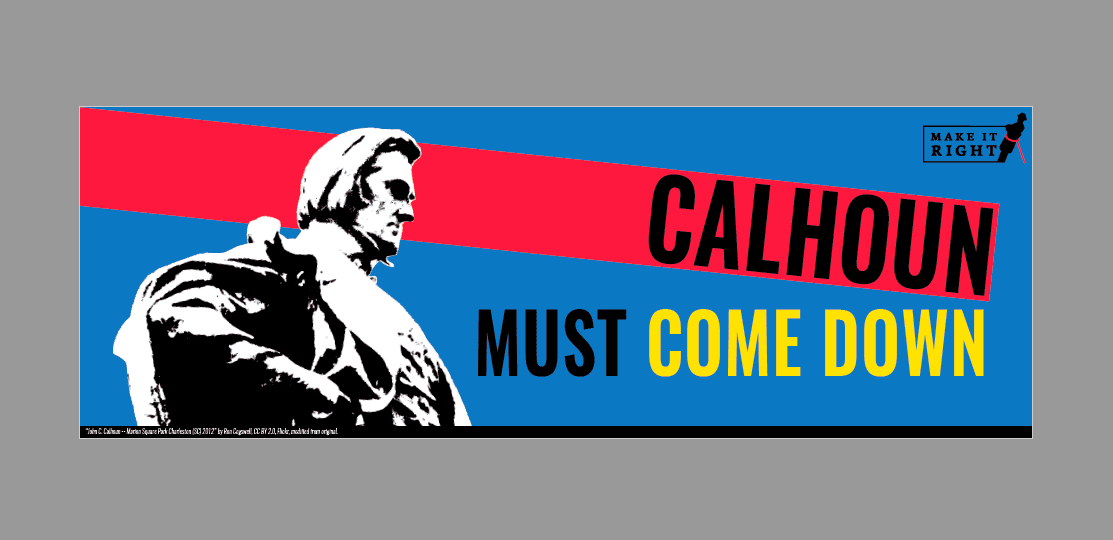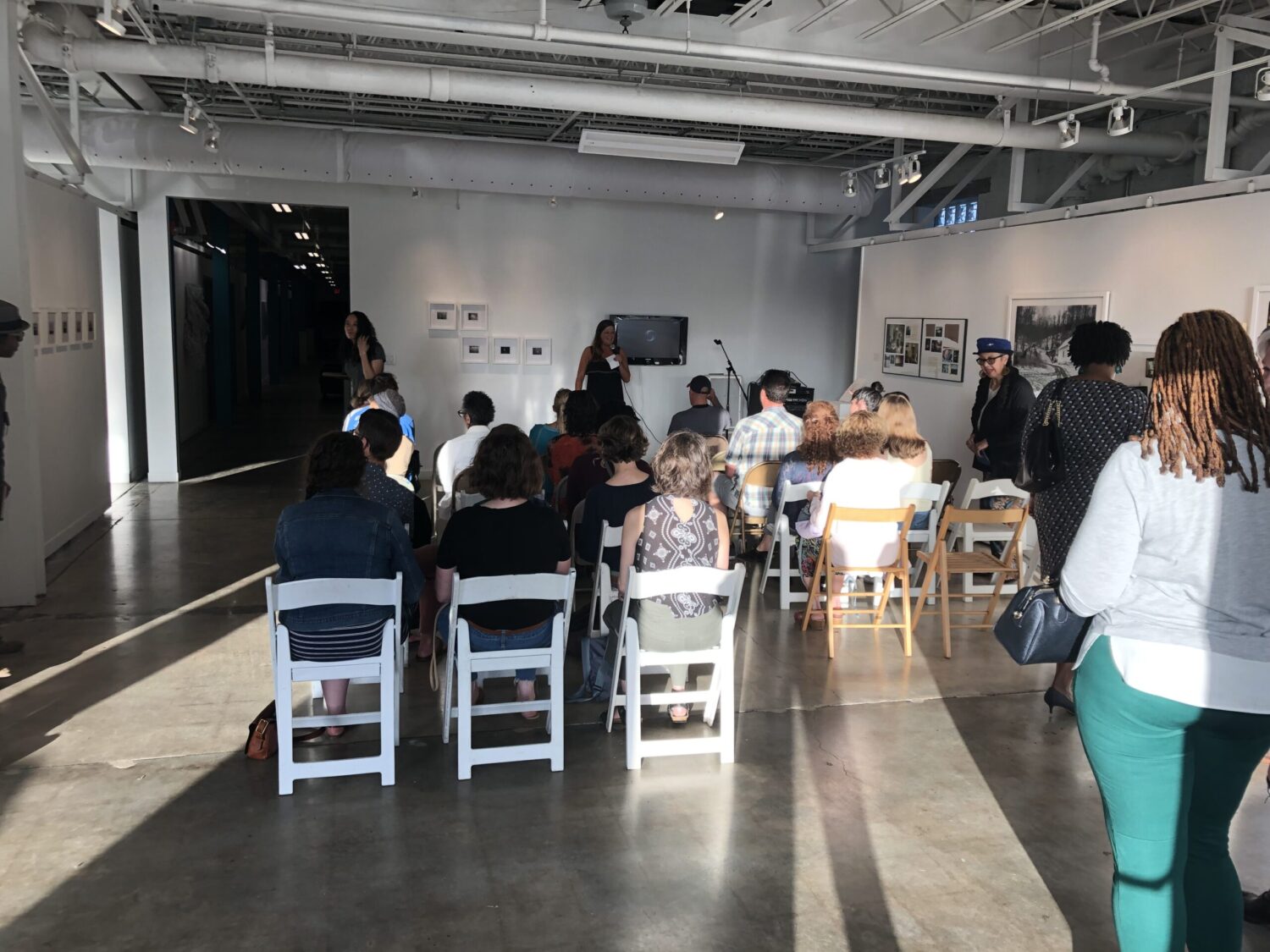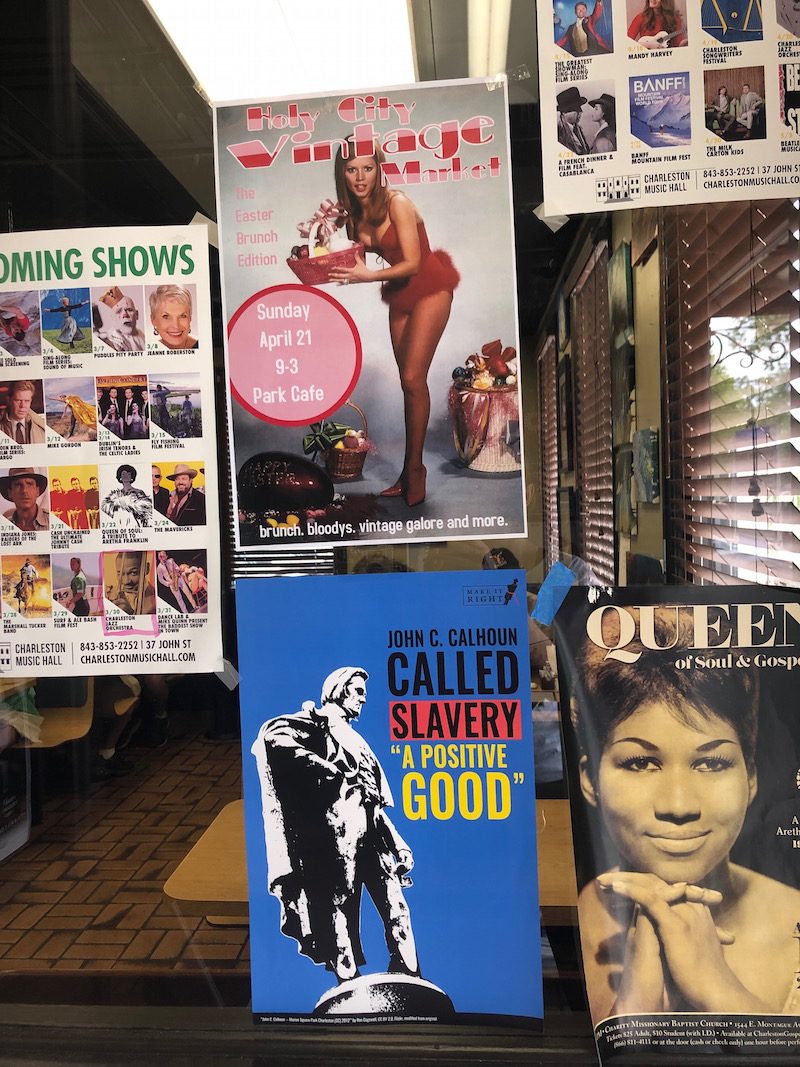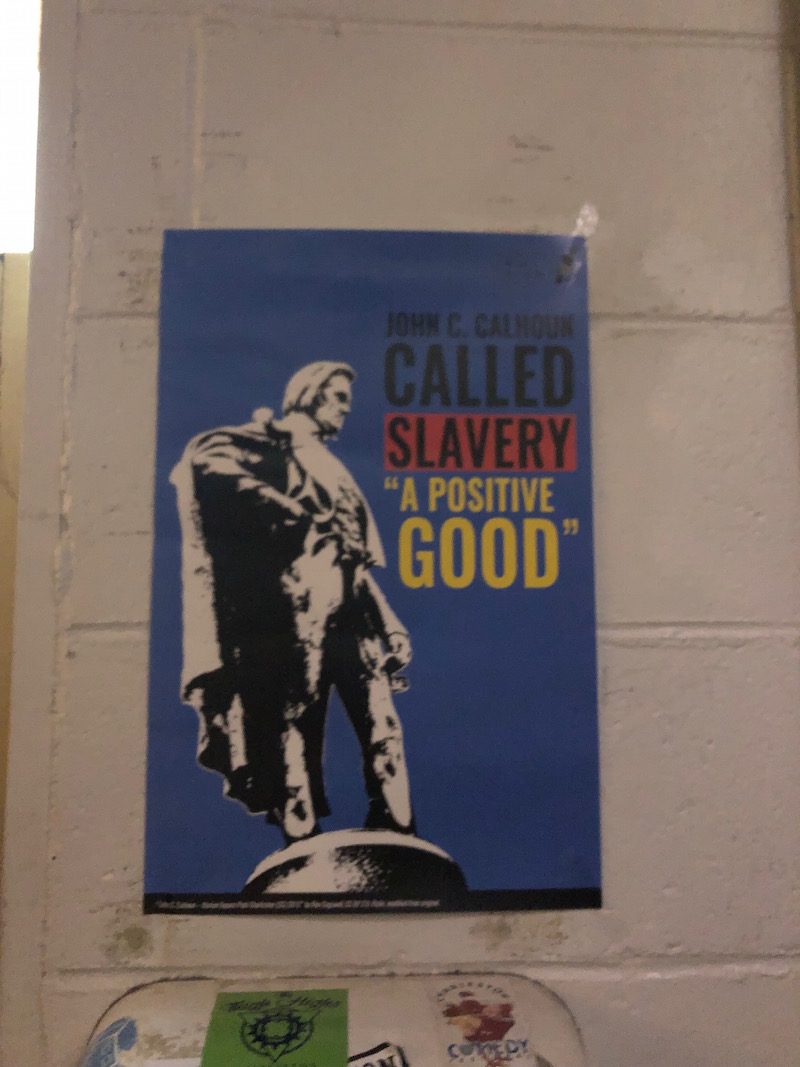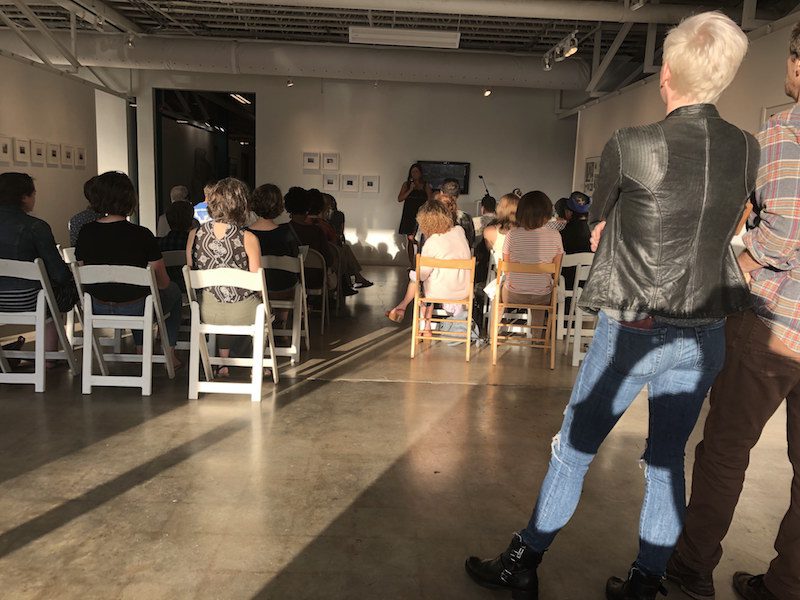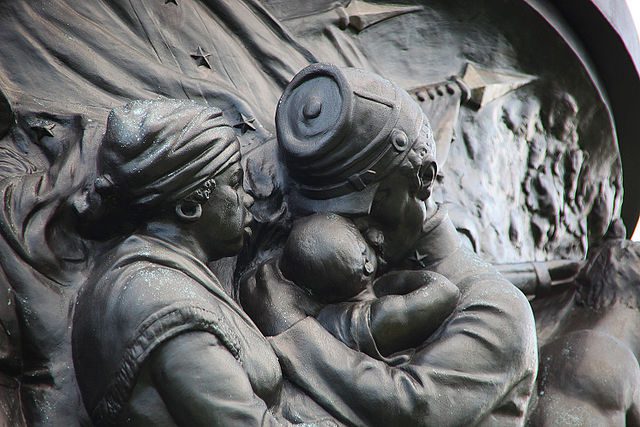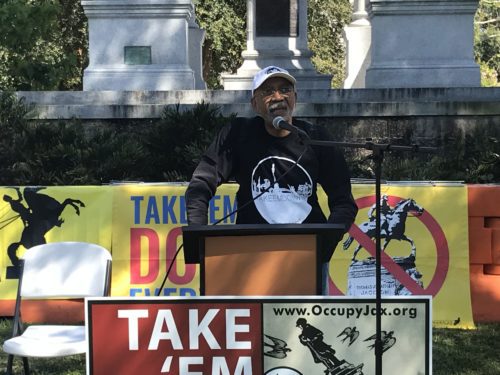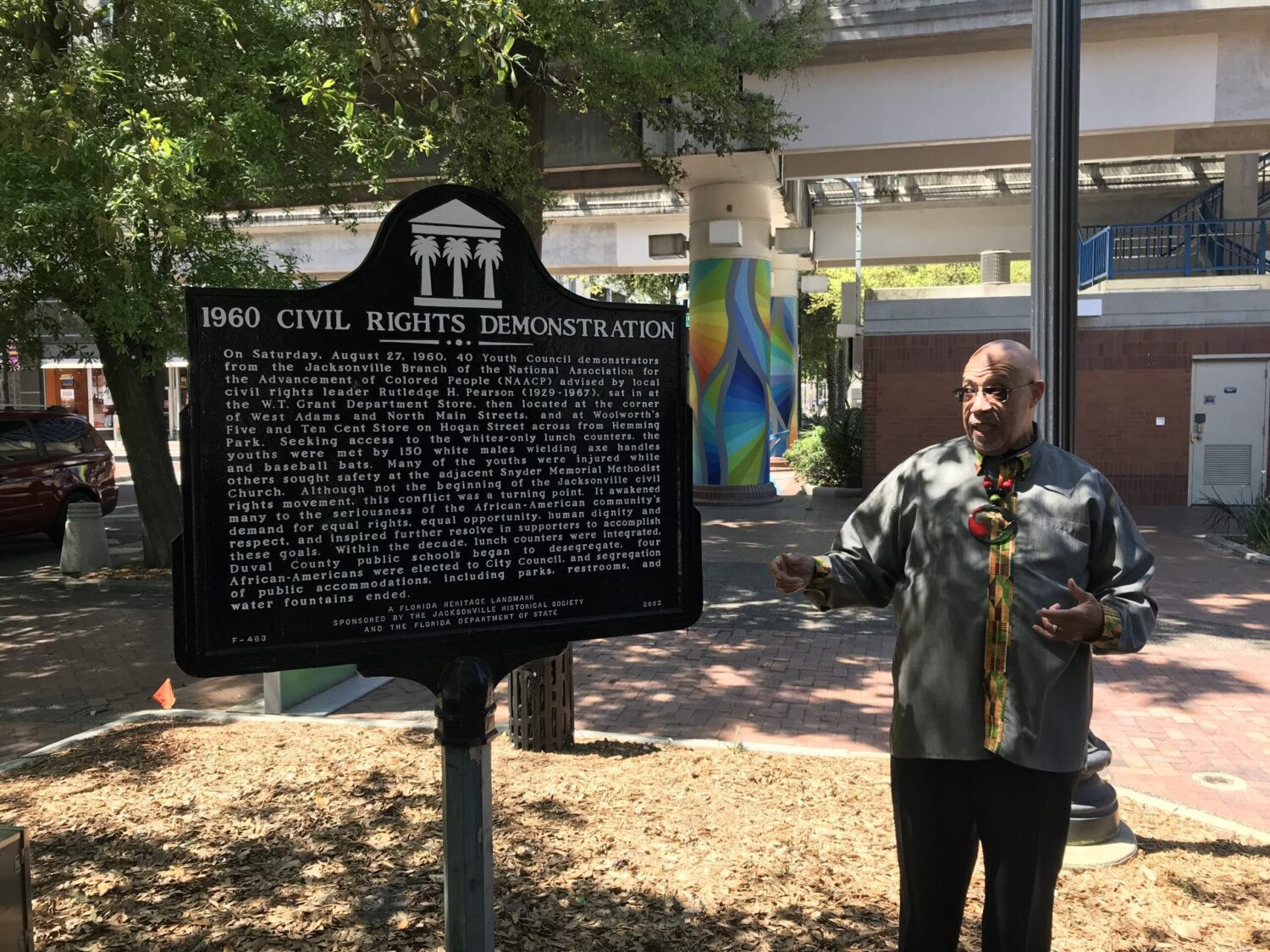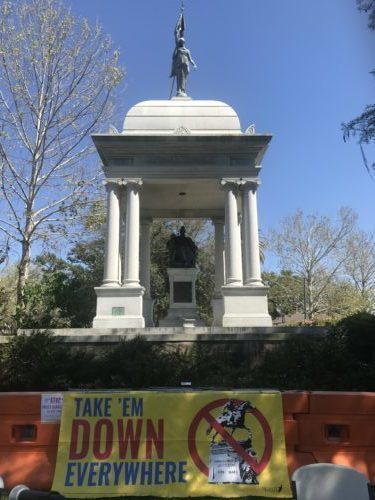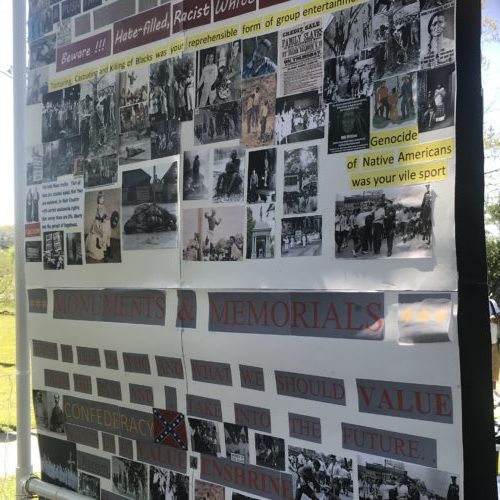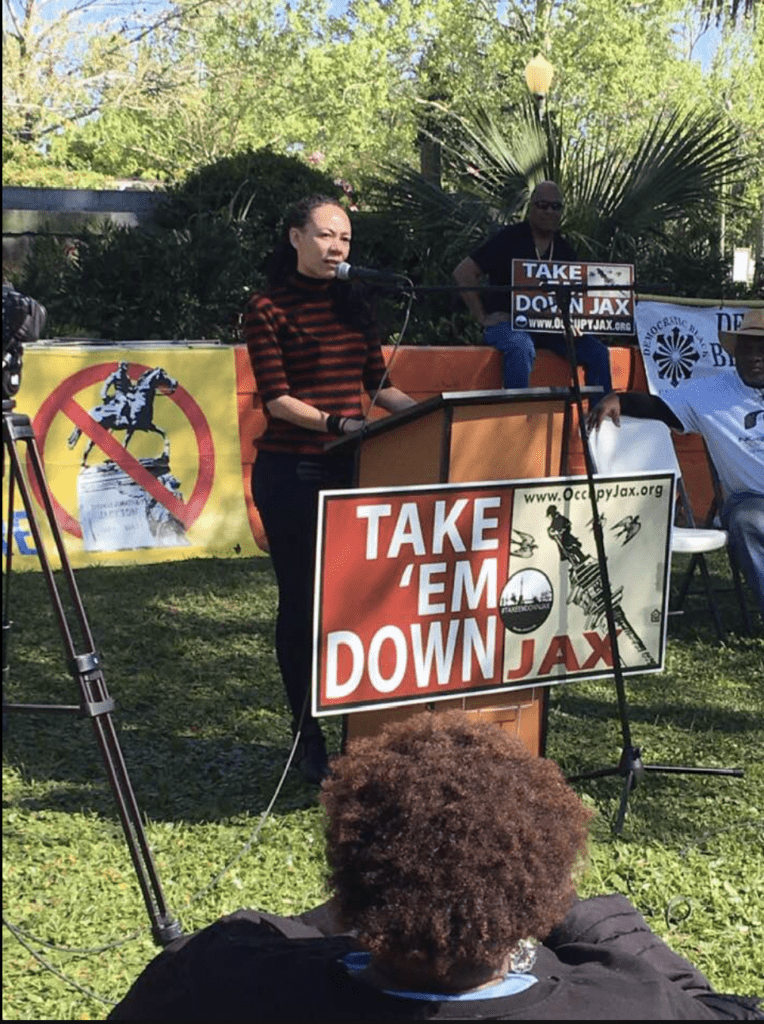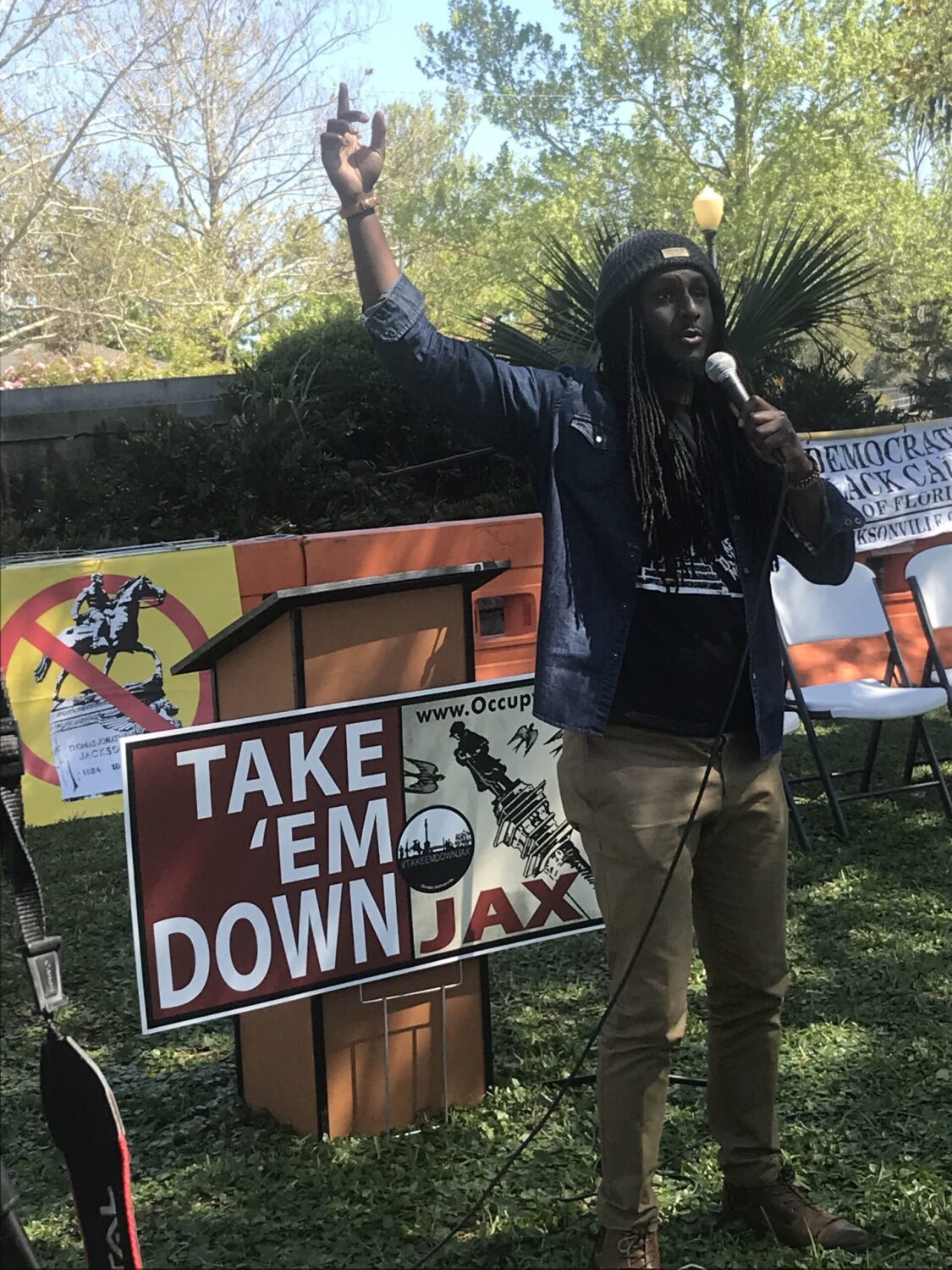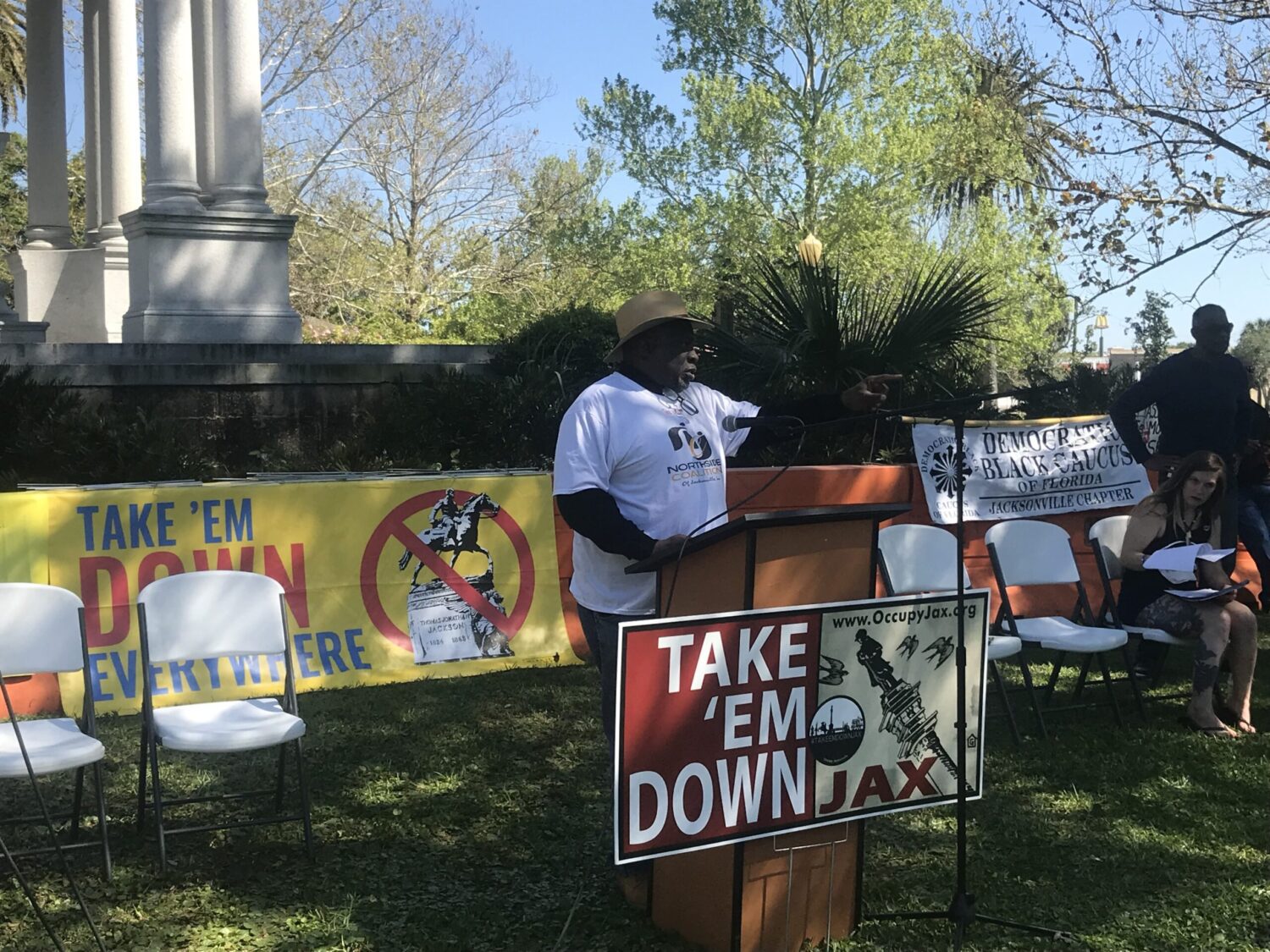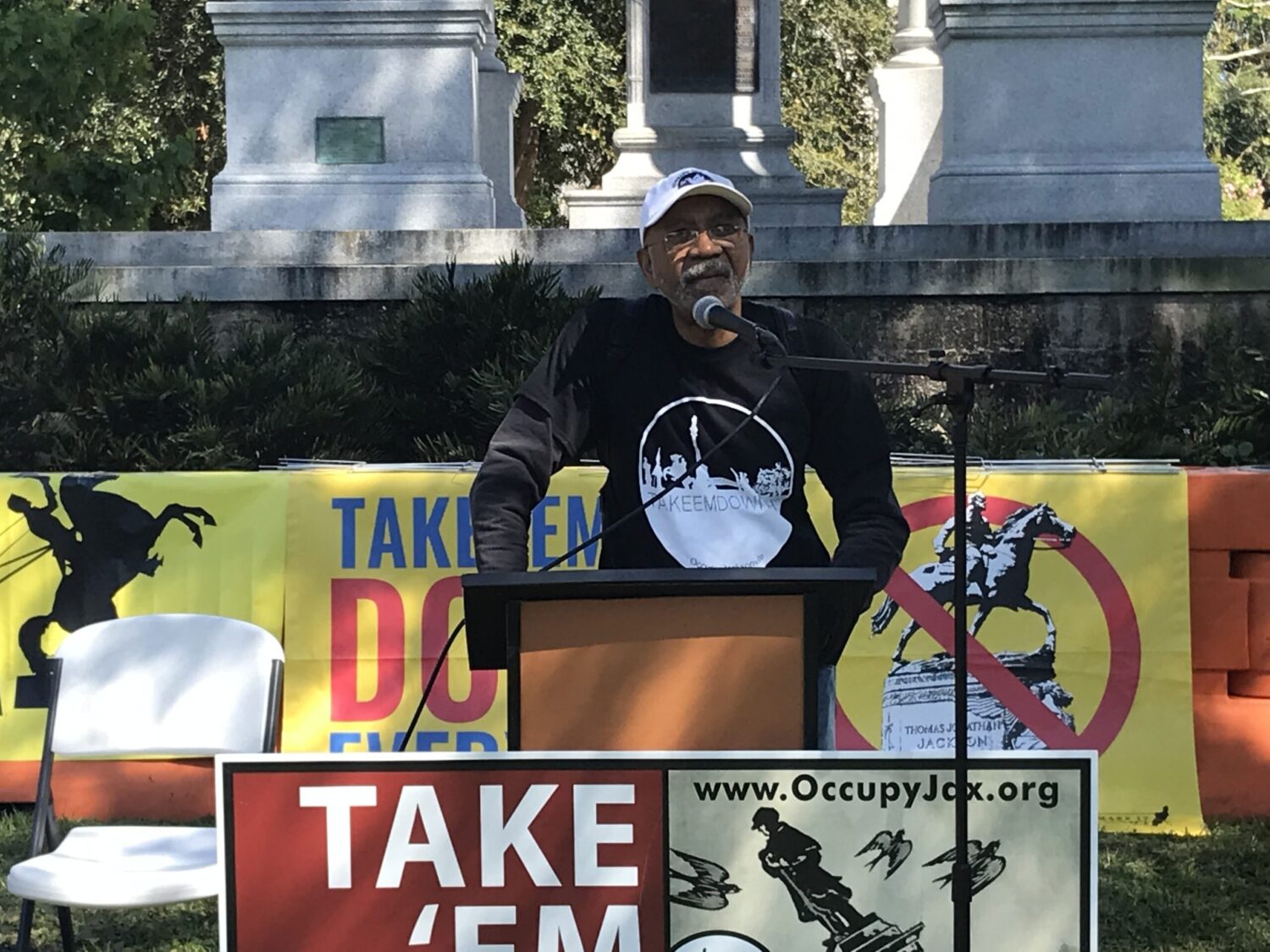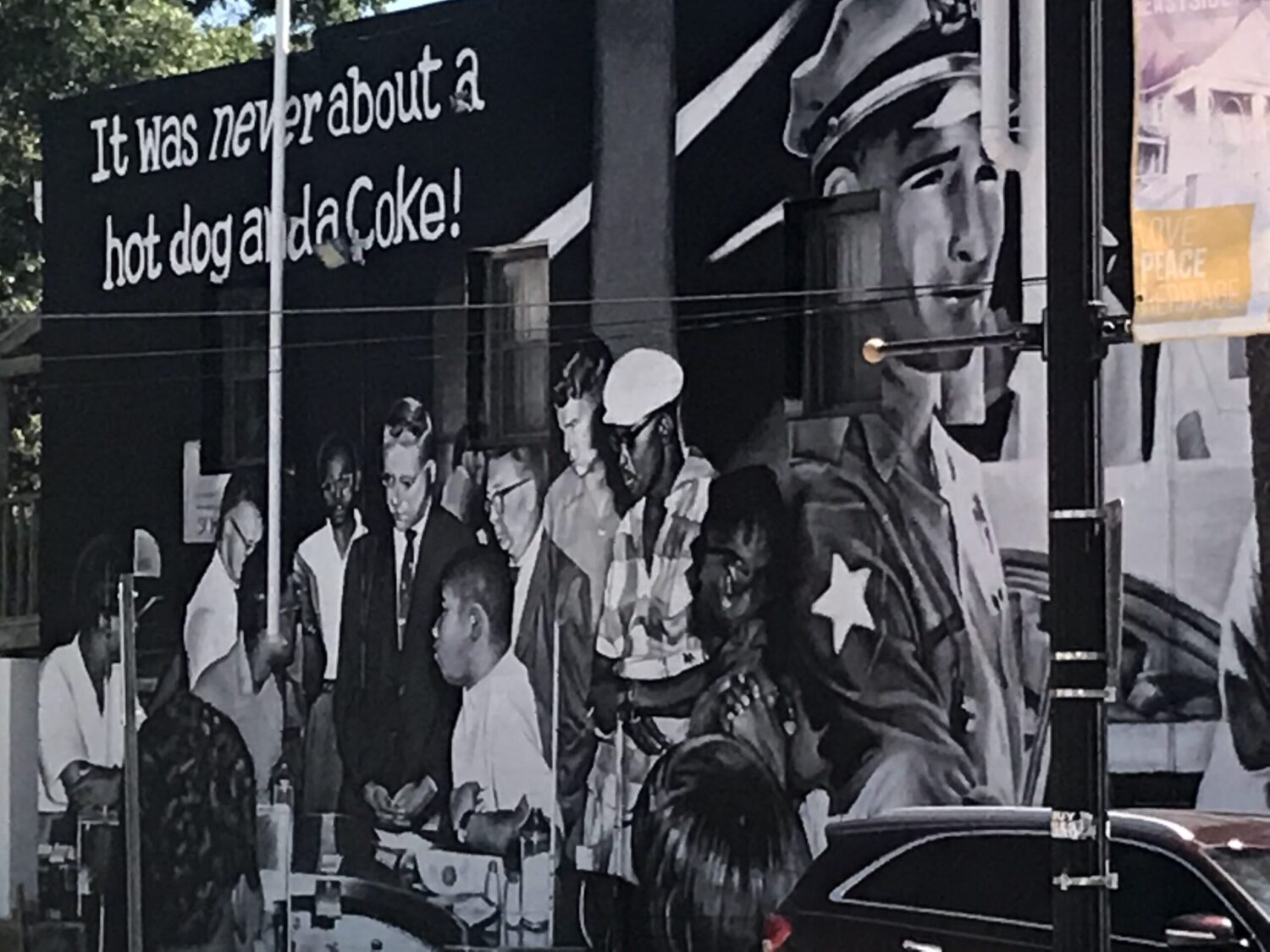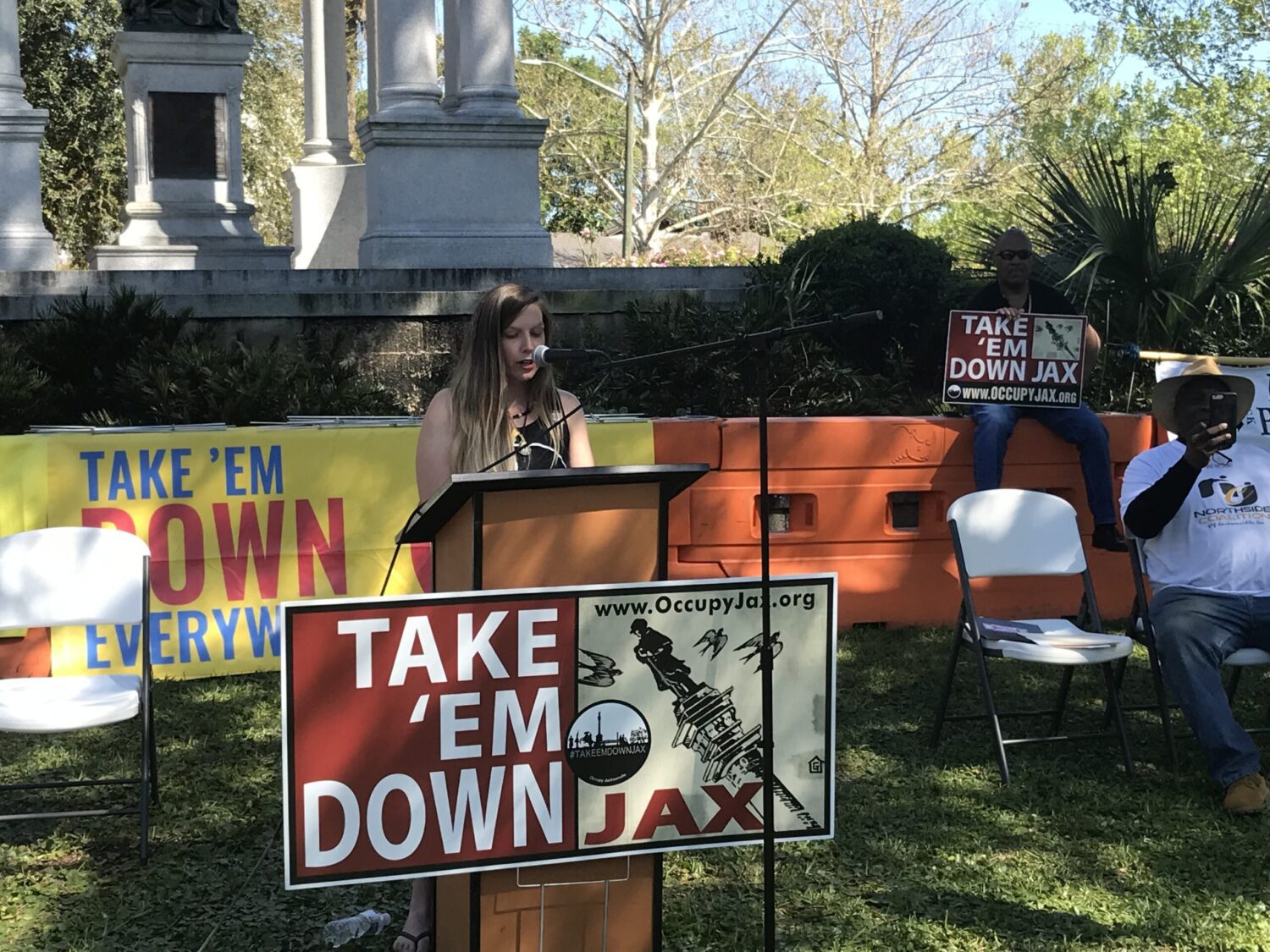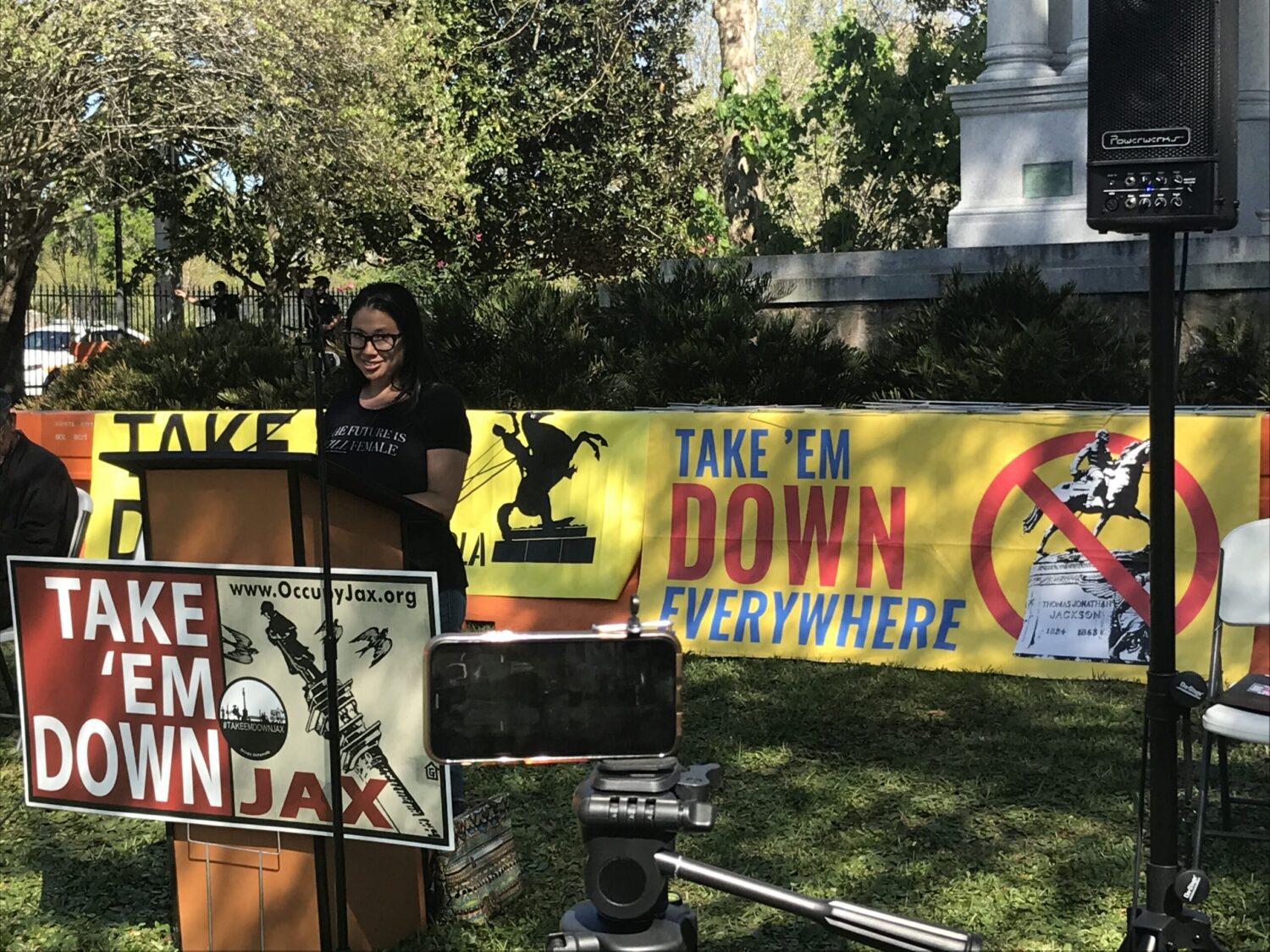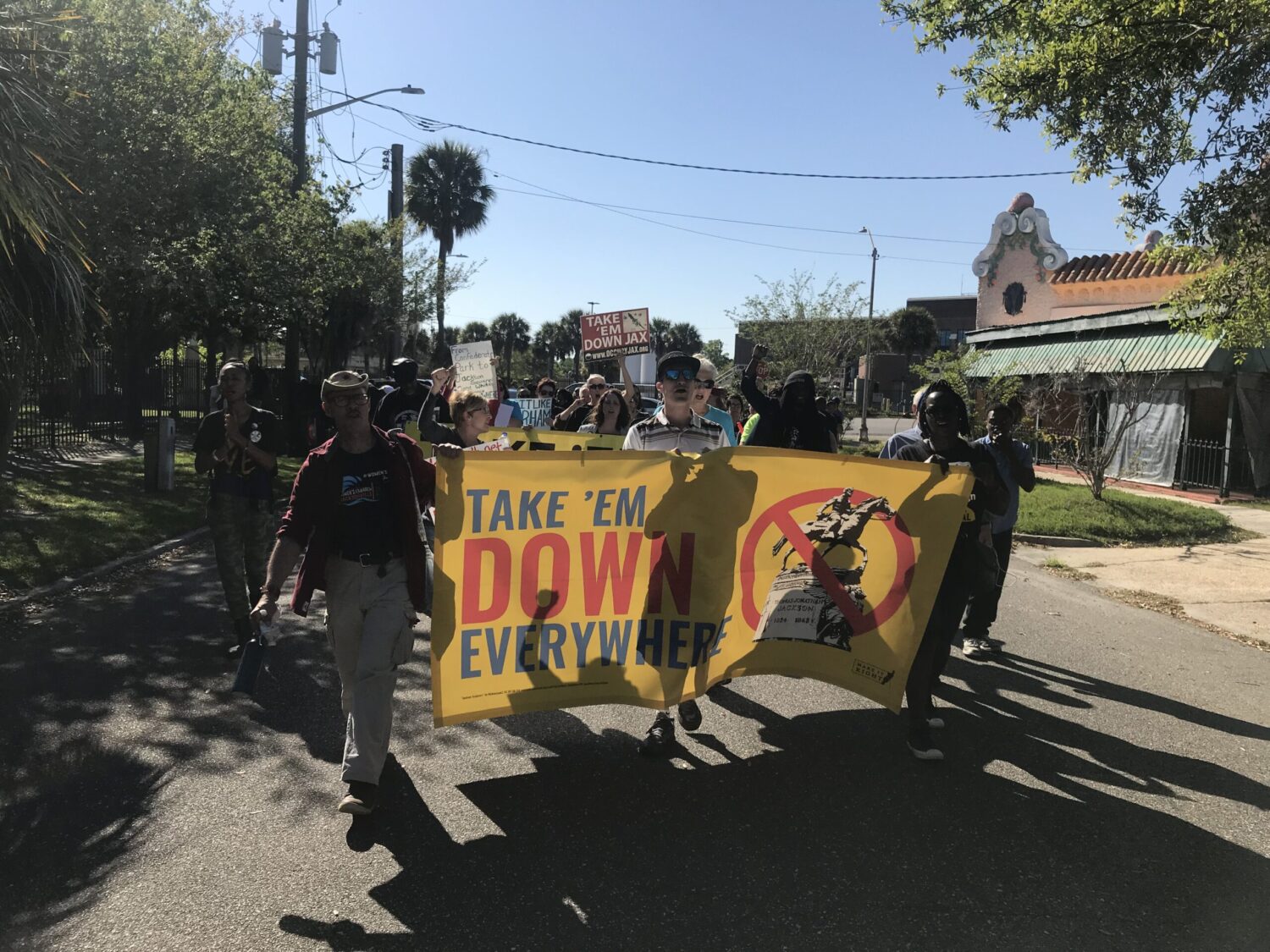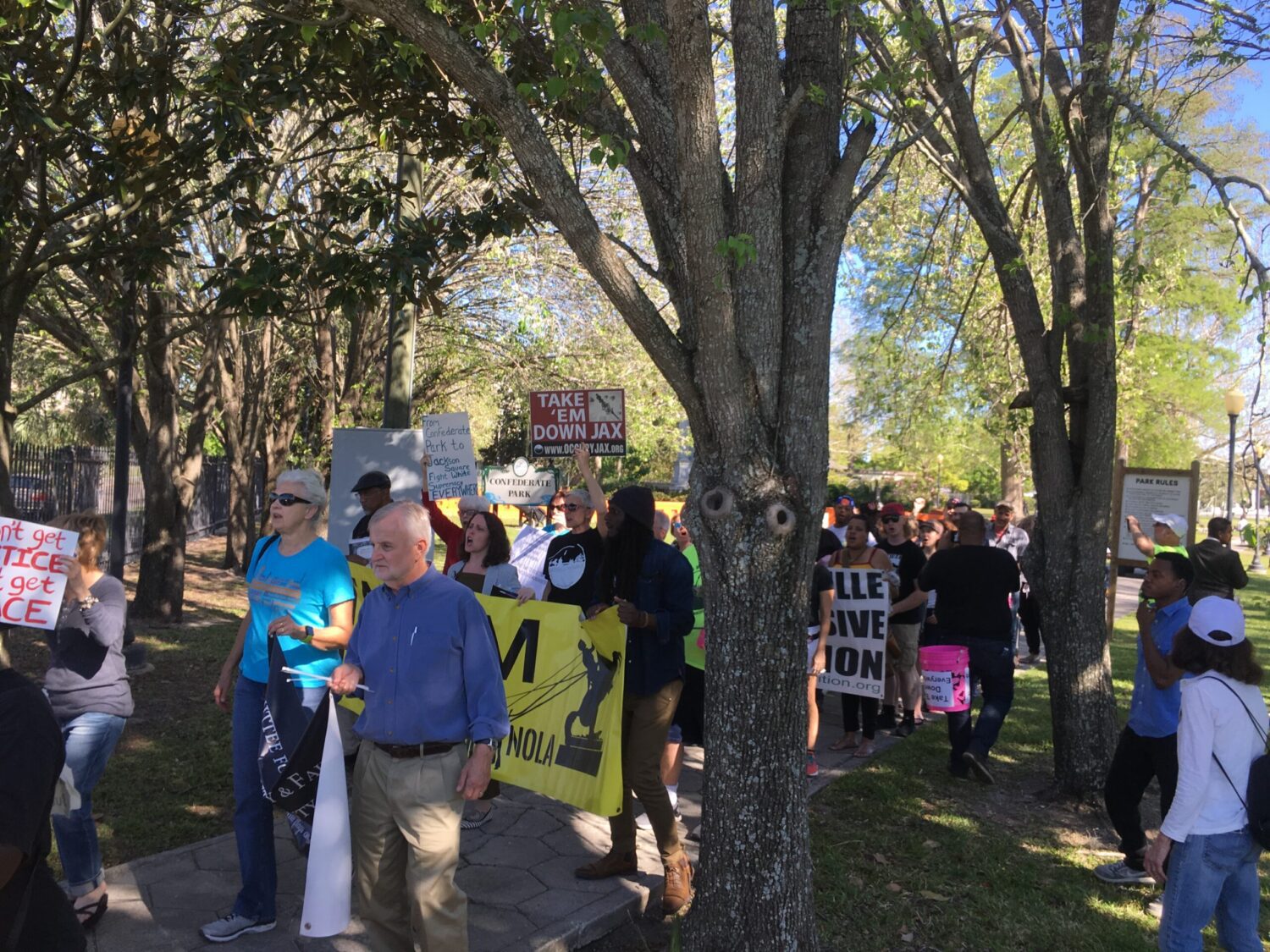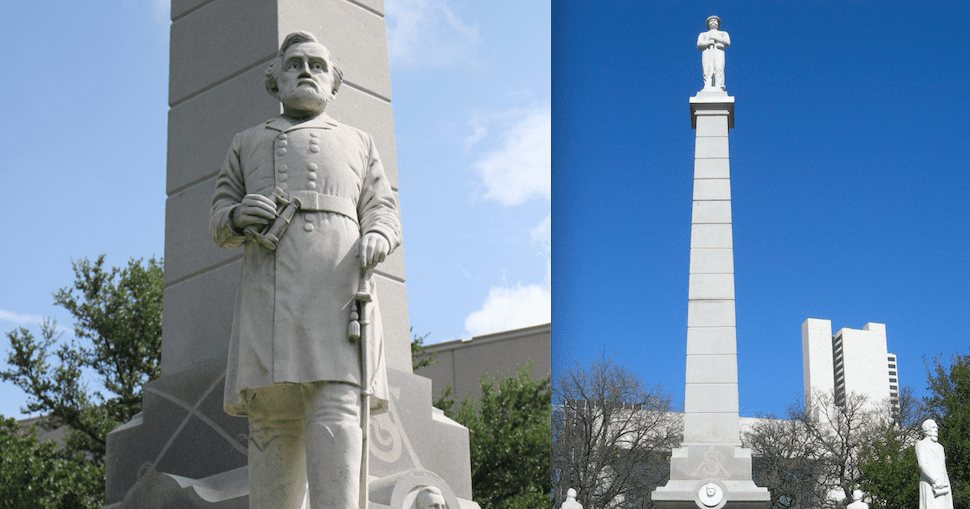According to the latest SPLC tally, there are roughly 780 Confederate monuments standing across the U.S.That’s a staggering number of tributes to the losing side of a treasonous insurrection; a war that ended not with a treaty, but with the South’s full surrender. More importantly, those statues honor people who fought for a nation founded to preserve black enslavement—a fact enshrined in its Constitution, its member states’ declarations of reasons for secession, its vice president’s most famous speech. It’s no wonder that white supremacists of every stripe—from the neo-Nazis who occupied Charlottesville to the man who currently occupies the executive office—are so fiercely defensive of them.
As Trump and the violent racists in his base contribute to an atmosphere of fear and hatred, one in which white racial terror violence is on the rise, the need to take down Confederate monuments has gained even greater urgency. Since the 2015 white supremacist murder of nine black parishioners in Charleston—a horrific meeting of America’s gun and race problems—114 monuments have been removed in cities from Brooklyn to Durham to Dallas. Yes, that’s a mere fragment of the total number of Confederate monuments. But communities across the country are currently embroiled in fights to remove white supremacist symbols from their public spaces, and few of those battles make it to the national press.
Below is an overview of the status of just a few Confederate monuments around the country.
Confederate-Named Army Bases: There are 10 Army bases in the South named for Confederate soldiers. Fort Gordon is named for General John Brown Gordon, the reputed head of the Reconstruction-era Ku Klux Klan in Georgia; Virginia’s Fort Lee honors Robert E. Lee, the man who led the treasonous fight to maintain black enslavement. In late July, the League of United Latin American Citizens proposed that Texas’s Fort Hood—currently named for John Bell Hood, who ditched the U.S. Army to take up arms for the insurrectionist Confederacy—be renamed for Special Forces Master Sgt. Roy Benavidez, a Texas native who received the Medal of Honor and five Purple Hearts for his service during the Vietnam War. Military news outlet Stars and Stripes notes that LULAC’s proposal “will go to the secretary of the Army then to the appropriate committees in Congress.” In related news, an amendment to the House version of the 2020 National Defense Authorization Act would prohibit the Pentagon from naming any assets after Confederates going forward.
District of Columbia: The statue of Confederate General Albert Pike in D.C. stands on National Park Service grounds. On July 30, Congressional Delegate Eleanor Holmes Norton introduced legislation to remove the statue from the plot of federal land it currently occupies. Instead, Norton is advocating for the rendering of Pike to be moved to a museum, or some other place it can be properly contextualized. She notes that the Freemasons, who funded the statue’s placement back in 1901, have co-signed her call for removal. A press release on Norton’s website declares that Pike “was a Confederate general who served dishonorably and was forced to resign in disgrace. It was found that soldiers under his command mutilated the bodies of Union soldiers, and Pike was ultimately imprisoned after his fellow officers reported that he misappropriated funds. Adding to the dishonor of taking up arms against the United States, Pike dishonored even his Confederate military service. He certainly has no claim to be memorialized in the nation’s capital. Even those who do not want Confederate statues removed will have to justify awarding Pike any honor, considering his history.”
Georgia: In 2010 the Georgia General Assembly passed a law that prohibits the removal of Confederate monuments. (Nearly identical “Heritage Laws” exist in Alabama, Mississippi, North Carolina, South Carolina, Tennessee and Virginia.) In April 2019, Governor Brian Kemp signed a bill that made relocation of Confederate statues, even to museums, illegal, and increased penalties for those caught protesting Confederate markers using defacement. Legislators in Atlanta—the blue dot in this Confederate-obsessed red sea—recently announced that they plan to put up plaques that add historical context about slavery next to four of the city’s Confederate markers. “This monument should no longer stand as a memorial to white brotherhood,” one sign notes; “rather, it should be seen as an artifact representing a shared history in which millions of Americans were denied civil and human rights.”
Tennessee: In 2017, the lawmakers in Memphis undertook a brilliant political strategy to circumnavigate the state’s repressive “Heritage Law” that prevents the removal of Confederate monuments. The law prohibits removal of Confederate statuary on public grounds, so city legislators sold two downtown parks to a private nonprofit for just $1,000 each. This allowed for the successful removal of statues honoring Confederate President Jefferson Davis and General Nathan Bedford Forrest, the first grand wizard of the Ku Klux Klan. The Sons of Confederate Veterans (a neo-Confederate group) are currently trying to convince a court to force the return of the statues. In the meantime, the statues are sitting in storage while a new site for them is chosen.
Louisiana:
New Orleans: Formed in 2014, Take ’Em Down NOLA was the primary organizing entity behind the movement to take down New Orleans’ Confederate statues. In June 2015, following the massacre of nine black church parishioners in Charleston, South Carolina, Mayor Mitch Landrieu publicly called for the removal of a statue of Robert E. Lee; the next month he officially tasked the City Council to begin the legal processes necessary to remove the statues. In December of that year, the Council voted 6-1 to remove four statues that glorified the Confederacy. They remained up until May 2017, their takedown forestalled by lawsuits filed by “preservationist” groups, as well as the Sons of Confederate Veterans. Those suits failed in federal court. The Confederate statues came down over 25 days in April and May 2017. Among the conditions of removal was a clause that the statues could never again be displayed outdoors on public grounds in New Orleans. The statues are currently in a city storage facility.
Shreveport: The Shreveport, Louisiana, chapter of the United Daughters of the Confederacy (UDC) appealed a federal judge’s 2017 decision to dismiss their lawsuit to keep up a Confederate monument in front of a local courthouse. In April 2019, the UDC lost their case.
North Carolina:
Chapel Hill: North Carolina’s Heritage Law was passed in July 2015, roughly a month after the Charleston church massacre, a hasty and transparent effort to protect the state’s racist Confederate statuary from the groundswell of calls for removal. The law made efforts to remove the UNC-Chapel Hill Confederate statue known as “Silent Sam”—which student and local anti-racist activists had been legally trying to take down for over five decades—yet more difficult. Inaction by UNC administration added to student outrage. In August 2018, community frustrations boiled over and the statue was toppled by a crowd of protesters. Since then, the school’s chancellor has stepped down and its Board of Governors has repeatedly punted on plans for the statue’s new permanent placement.
Winston-Salem: North Carolina’s 2015 Heritage Law prevents the removal of statues from public land, but has no say over markers on private property. After Winston-Salem Mayor Allen Joines made public his intent to remove a local Confederate marker, the United Daughters of the Confederacy (the group who erected a local Confederate statue), which had previously claimed ownership of marker, denied ownership in court papers to establish it as a public object protected by the law. The UDC sued the city, which moved forward with plans for removal on March 12, placing it in storage until it could be erected in the Salem Cemetery. A UDC lawsuit to have the marker put back failed in court. “It is a symbol of oppression and the subjugation of the African-American people and so it’s hurtful to many in our community,” Mayor Joines told news outlets. The city has announced plans that it will move the statue to a Confederate cemetery.
Texas:
Dallas: After 81 years, an equestrian statue of Confederate General Robert E. Lee was removed from a Dallas park in September 2017—one month after the white nationalist Unite the Right rally in Charlottesville. The statue sold in an online auction for $1.4 million to a buyer using the screen name “LawDude,” who was later identified as Texas law firm owner Ron Holmes.
Back in February 2019, the Dallas City Council voted 11-4 to take down the city’s Confederate War Memorial, a 60-foot-tall monument featuring statues of Confederate President Jefferson Davis and Generals Robert E. Lee, Stonewall Jackson and Albert Johnston. In the months that followed, the city’s Landmark Commission and Plan Commission would both concur with the Council’s vote, and a win seemed just over the horizon for Dallas anti-racist activists, who’ve worked tirelessly for years to bring the monument down. Unfortunately, two lawsuits in two different courts have stalled progress on removal. In recently filed court papers, the city argues against the contention that the statue must remain standing for its “protection.” The city’s brief notes that it is “not threatening to sell or destroy the Confederate Monument” but “only to have the monument safely removed and archivally stored.” In other words, it’ll be as safe in storage as it is in the park, where it’s currently covered by a tarp.
San Antonio: In 2017, the UDC chapter in San Antonio, Texas, filed a federal lawsuit against local officials after the City Council, following the racist violence in Charlottesville, voted to remove a Confederate monument from public property. It’s been nearly two years since the Confederate monument was removed from Travis Park, taken down in the dead of night after a 10-1 City Council vote. The suit is still being litigated; the statue is now in storage.
Florida:
Gainesville: The Alachua County Commission voted 4-1 to take down a Confederate monument known locally as “Old Joe” in 2017. After both a local history museum and the county’s Veterans Memorial Park refused to take it, the UDC—which erected the statue in 1904—stepped in to “save” the marker by taking it back and paying for its removal. It was removed by a construction crew on August 14, 2017, roughly 48 hours after the Unite the Right rally. According to the Gainesville Sun, the statue was relocated to the Oak Ridge Cemetery, a private graveyard near Rochelle, Florida.
Lake County: The National Statuary Hall in the U.S. Capitol Building is a grand chamber filled with statues of noteworthy Americans, two submitted by each state. For the first time since the statue collection began in 1870, a U.S. state will be represented by a black American. Mary McLeod Bethune—educator, civil rights pioneer, antilynching advocate, adviser to President Franklin D. Roosevelt and founder of Bethune-Cookman University in Daytona Beach—will now be the figure depicting Florida. She will replace an outgoing statute of Confederate General Edmund Kirby Smith. In a highly controversial move, commissioners in Lake County, Florida, voted to take possession of the Confederate statue, despite intense outcry from residents. Per one local outlet, “Nine of the 14 municipalities in Lake County approved formal resolutions opposing the relocation of the statue.” According to the paper, “the Lake County Historical Society Museum intends to house the museum in a facility above the historic county jail.”
California: It’s a testament to the insidiousness of the Confederacy—if not the insurrectionist uprising, certainly the ideology—that California was once the home to many Confederate markers. Honorifics to Confederates included the Dixie School District just outside San Francisco (renamed Miller Creek Elementary School District just this past July) and the two sequoias in Sequoia National Park named for Robert E. Lee (both still standing, names unchanged). In 2004—again, 2004—the Sons of Confederate Veterans erected a nine-foot-tall monument honoring Confederates in Santa Ana Cemetery. The marker praised “the sacred memory of the pioneers who built Orange County after their valiant efforts to defend the Cause of Southern Independence.” In July, protesters showed their disdain for the granite marker using defacement, spray painting one side red and scrawling the word “racists” down its face. Less than a month later, on August 1, the monument was removed by the city and placed in storage. Orange County Cemetery District General Manager Tim Deutsch reportedly stated the protesters’ paint job had made the monument “an unsightly public nuisance.”
Missouri:
Kansas City: Days after the 2017 Unite the Right rally in Charlottesville, protesters defaced the “Loyal Women of the Old South” Confederate monument. A local chapter of the UDC “gifted” the statue to Kansas City in 1934; following the defacement, the group accepted an anonymous donor’s offer to remove the statue to prevent further harm. Then-Parks Director Mark McHenry told press that the monument was placed “in storage in an undisclosed location, not on park property.”
St. Louis: After Mayor Lyda Krewson publicly declared in 2017 the city’s intent to remove a Confederate memorial put up by the UDC in 1912, a local chapter of the group signed over ownership to the Missouri Civil War museum. The museum then successfully sued the city for custody of the structure. The director of the museum has noted that the removed structure had been “painted by protestors and the city’s resulting use of paint stripper damaged the work. It will be undergoing restoration.” The museum is ultimately looking for the right property to place it in, such as “a Civil War battlefield, a Civil War cemetery, or a museum property.”
Montana: Disgusted by the murderous violence in Charlottesville, members of the American Indian Caucus of the Montana Legislature drafted an open letter to appeal to state legislators to remove a Confederate memorial. “The fountain was commissioned by the United Daughters of the Confederacy, an organization that openly supported the white supremacist views and mission of the early Ku Klux Klan,” the letter noted. “This is the only Confederate monument in the northwestern United States.” The memorial—a fountain that sat for 101 years in the city’s Hill Park—was removed in on August 18, 2017. A group called the Equity Fountain Project put out a call for new designs to replace the old monument and raised the funds needed to build and maintain the marker. Citizens of Helena chose, via vote, the final fountain design, titled the “Sphere of Interconnectedness.” Equity Fountain Project head Ron Waterman expressed hopes the fountain will showcase the “values of equity and equality, diversity, respect, generosity and compassion, tolerance, service, peace and justice.” Once the new monument is placed, Montana will become the first city to remove and replace a Confederate marker.
Tennessee: The city of Franklin, Tennessee, has an ongoing lawsuit against the UDC to determine who owns the land in one local public park containing a Confederate monument erected by the UDC in the late 19th century. The UDC threatened legal action when Franklin city leaders announced plans to add markers recognizing African-American historical figures to the park. Despite those threats, the city is going forward with construction of the markers.
Maryland: For months, Baltimore’s political leaders debated the fate of its Confederate statuary. After the white supremacist violence at the Unite the Right rally, the city acted swiftly to remove those monuments, taking down four markers on the night of August 15 and the wee hours of the morning that followed. Those statues were placed in storage. A recent New York Times investigation notes that city officials are “asking for a detailed plan from anyone interested in acquiring” the monuments.
Virginia:
Charlottesville: The equestrian statues of Confederate Generals Robert E. Lee and Thomas “Stonewall” Jackson—rallying points for the neo-Nazis of the Unite the Right rally—still stand in two Charlottesville parks. The Charlottesville City Council voted to relocate the Lee statue in 2017 (a move the white supremacists cited to justify their violence), but the removal has been stalled by a lawsuit filed by 13 plaintiffs, including the Sons of Confederate Veterans. The judge in the case, who at intervals has made clear his Lost Cause-influenced view of Southern history, has often sided with the plaintiffs at critical points throughout the case. It is very likely that whatever the final decision in the case, the lawsuit will end up in the Virginia Supreme Court.
Hampton: In 1956—two years after the Supreme Court decision that legally desegregated Southern schools—the UDC funded an archway at Fort Monroe Army base in Hampton, Virginia, that decreed the area “Jefferson Davis Memorial Park.” As Virginia officials have more recently noted, the peninsula on which Fort Monroe is located was originally known as Point Comfort, where the first Africans enslaved in this country arrived in 1619. (Fort Monroe was decommissioned as a military base in 2011.) On August 6, “Jefferson Davis” was removed from the archway. The letters were donated to the Fort Monroe Casemate Museum.
